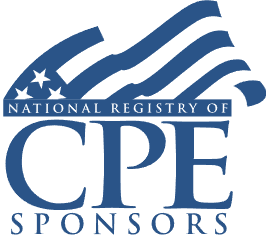Branch Profits Tax Rules: Calculating and Reporting Dividend Equivalent Amounts and Identifying Exemptions
Completing Form 1120-F Section III, Computing Tax on Excess Interest, and Planning to Minimize Branch Profits Tax

Course Details
- smart_display Format
On-Demand
- signal_cellular_alt Difficulty Level
Intermediate
- work Practice Area
Corporate Tax
- event Date
Wednesday, May 10, 2017
- schedule Time
1:00 PM E.T.
- timer Program Length
110 minutes
-
BARBRI is a NASBA CPE sponsor and this 110-minute webinar is accredited for 2.0 CPE credits.
-
BARBRI is an IRS-approved continuing education provider offering certified courses for Enrolled Agents (EA) and Tax Return Preparers (RTRP).
-
Live Online
On Demand
This course will provide corporate tax advisers with a practical and comprehensive guide to planning and calculations related to the branch profits tax. The panel will detail steps needed to calculate the dividend equivalent amount (DEA) that constitutes the base for computing the branch profits tax, discuss the impact of FIRPTA gains and losses on branch profits calculations, and offer guidance on exceptions from DEA that can serve to minimize the tax.
Description
A critical factor for entities owned by foreign companies is navigating the requirements of the branch profits tax rules. When a foreign company establishes a branch to operate in the U.S., that branch is subject to a tax of 30% of all “deemed withdrawals” of its “effectively connected earnings and profits” (ECEP) under the branch transaction rules of Section 884. Tax advisers must fully grasp not only the mechanics of calculating this tax, but also the impact of the rules in determining a non-U.S. taxpayer company’s form of investment in the U.S.
Calculation of the branch profits tax is often complicated by complexities arising from both the determination of the tax base on which the tax is imposed and the timing of imposition of the tax. Additionally, gain derived from certain dispositions of assets held by the foreign parent may also be subject to branch profits tax, which may result in double taxation of certain income of the parent company. Navigating the requirements of Form 1120F is crucial for tax professionals advising foreign branch operations.
The Code, as well as tax treaties, provide some limitations and exemptions from the branch profits tax, as does FIRPTA. For some FIRPTA assets, gain is not included in ECEP calculations and is exempt from the branch profits tax; other FIRPTA gains are subject to the branch profits tax. Tax advisers need to know the impact of this tax on transactions for both compliance an planning purposes.
Listen as our group of experienced tax advisers provides a thorough and practical guide to the branch profits tax rules of Section 897, and offers useful instruction on completing Form 1120F.
Outline
- Mechanics of the branch profits tax
- Determining taxable income
- Effectively connected earnings and profits
- Dividend equivalent amount
- Excess interest
- Exceptions and exemptions
- Completing Form 1120-F
- Impact of FIRPTA on branch profits tax calculations
- Tax treaties
- Structuring U.S. activities
Benefits
The panel will discuss these and other important topics:
- How to identify and calculate the various components of a branch profits tax computation under Section 897
- Identifying DEAs for timing purposes
- Recognizing when FIRPTA income is—and is not—subject to the branch profits tax
- Common tax treaty exceptions to the Code provisions determining gains and income subject to the branch profits tax
- Common mistakes in completing Form 1120F and how to avoid them
NASBA Details
Learning Objectives
After completing this course, you will be able to:
- Discern FIRPTA transaction gains that are exempt from ECEP calculations under the branch profit rules
- Recognize the steps needed to calculate DEA, ECEP and effectively connected interest
- Identify tax calculations and timing considerations needed to report branch profits tax on Form 1120F
- Determine whether a termination event qualifies for a complete termination exemption from branch profits tax liability
- Field of Study: Taxes
- Level of Knowledge: Intermediate
- Advance Preparation: None
- Teaching Method: Seminar/Lecture
- Delivery Method: Group-Internet (via computer)
- Attendance Monitoring Method: Attendance is monitored electronically via a participant's PIN and through a series of attendance verification prompts displayed throughout the program
- Prerequisite: Three years+ business or public firm experience at mid-level within the organization, involved in complex tax structures and planning; supervisory authority over tax staff, accountants. Knowledge and understanding of IRS Section 897 and determining a non-US taxpayer companys form of investment in the U.S., methods of calculating branch profits tax.; familiarity with Form 1120F, FIRPTA and ECEP calculations.

Strafford Publications, Inc. is registered with the National Association of State Boards of Accountancy (NASBA) as a sponsor of continuing professional education on the National Registry of CPE Sponsors. State boards of Accountancy have final authority on the acceptance of individual courses for CPE Credits. Complaints regarding registered sponsons may be submitted to NASBA through its website: www.nasbaregistry.org.

Strafford is an IRS-approved continuing education provider offering certified courses for Enrolled Agents (EA) and Tax Return Preparers (RTRP).
Unlimited access to premium CLE courses:
- Annual access
- Available live and on-demand
- Best for attorneys and legal professionals
Unlimited access to premium CPE courses.:
- Annual access
- Available live and on-demand
- Best for CPAs and tax professionals
Unlimited access to premium CLE, CPE, Professional Skills and Practice-Ready courses.:
- Annual access
- Available live and on-demand
- Best for legal, accounting, and tax professionals
Unlimited access to Professional Skills and Practice-Ready courses:
- Annual access
- Available on-demand
- Best for new attorneys
